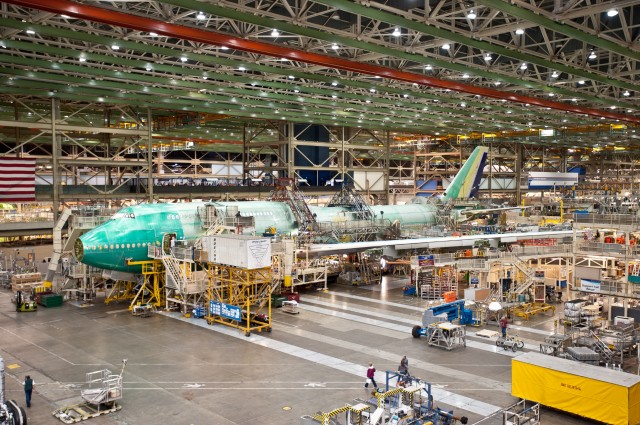
A Lufthansa 747-8 Intercontinental inside the Boeing Factory – Photo: David Parker Brown | AirlineReporter
When I first started this blog about five and a half years ago, the word “AvGeek” did not exist. The people still existed, fans of aviation, but we didn’t get the attention that we enjoy today. Now, we are seeing more and more “legacy,” media covering who we are and what makes us tick. I am honored and thrilled that Thom Patterson, who writes for CNN, not only took the time to come to Aviation Geek Fest, but he also wrote a story talking about who we are. I wanted to share his story and here is an excerpt with a link to the full story – David
Everett, Washington (CNN) — Sprawled out before us sits the exterior of the world’s biggest building by volume. They make airliners here. Big ones.
“Let’s go see some airplanes!” says our Boeing VIP tour guide.
I remind myself: This doesn’t happen very often.
Yeah yeah yeah, Boeing offers public tours of this 98.3-acre airliner factory north of Seattle every day. This ain’t that. This is special.
As part of a convention of aviation fans called Aviation Geek Fest, we’re gaining ultra-exclusive access to the factory FLOOR. The public tour is limited to the balcony. We’re about to walk knee-deep where Boeing gives birth to some of the world’s biggest and most advanced airliners, including the 747-8 Intercontinental, the 777 Worldliner and the 787 Dreamliner.
Read the rest of Thom’s story on CNN…
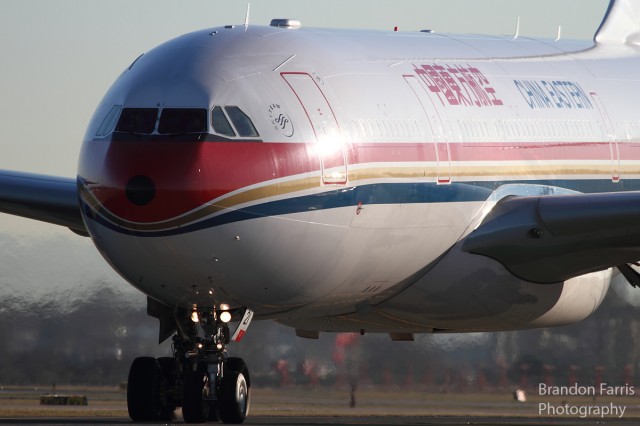
Nothing like being just a few feet away from a wide-body aircraft taxing by
While I had the chance to cover the first Japan Airlines 787 at YVR, the Vancouver Airport Authority took me out about 30 minutes prior to the arrival. This gave me a chance to do some spotting since I always love getting airside access when I can. Here is a small gallery of some of the traffic that travels through the airport. Enjoy!
[nggallery id=64]

It has been over a week now since Aviation Geek Fest Seattle and many of us still are having a hard time wiping the grins off our faces. We are still waiting on the photos from Boeing (coming soon) and when we get them, we will be sure to share.
For now, we wanted to get feedback from those of you attended and those of you who were not able to attend; What do you want to see at Aviation Geek Fest Seattle 2015? The sky (well, maybe shallow space) is the limit. What did you like? What didn’t you like? What dates work best for it? You can be honest – no feelings will be hurt.
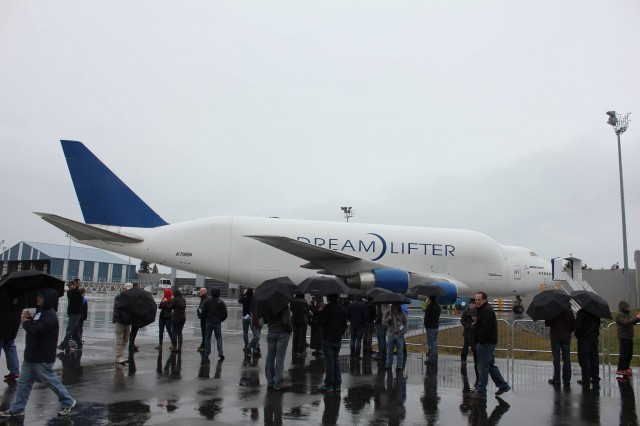
AvGeeks endure the rain to get close to a Dreamlifter next to the Future of Flight during AGF14 Photo: David Parker Brown | AirlineReporter
Take a moment and share your thoughts in the comments, as well as read other comments and see what you think. We want to make sure the next AGF is bigger and better than ever!
Thanks to Ian (@ikluft) for making the AGF15 banner
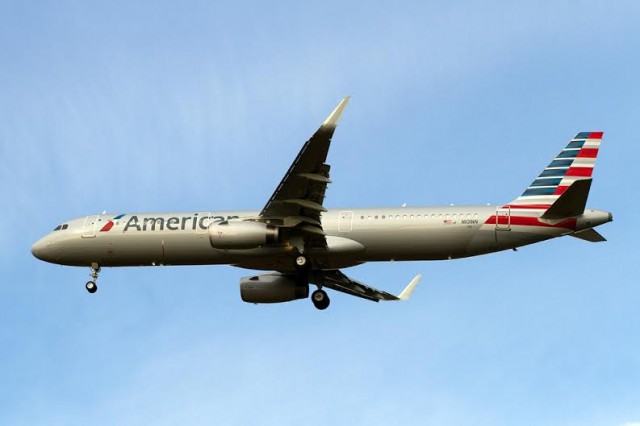
American’s new Airbus A321 in flight – Photo: Eric Dunetz
A while back, I viewed a tweet about an Air Traffic Control (ATC) conversation in New York, where JFK ATC got a little bit confused about an aircraft type. American Airlines (AA) Flight 32 was incorrectly called a ’œheavy’ aircraft, likely because for so long that flight was operated by a Boeing 767-200. Ever since AA debuted their new Airbus A321 on the LAX-JFK route, this flight no longer needs to use the “heavy” designation, but that didn’t stop the ATC staff from using old habits. It made me question, at what point does an aircraft become ’œheavy’?
When aircraft are approaching or departing an airport, they must use special designations to help avoid the wake turbulence from other aircraft. Larger aircraft, like a 767 or an A340, need more space behind them to prevent the wake vortices generated by the larger wing span from impacting other aircraft. The bigger the aircraft, the longer the distance.
The dangers are real, as all over the world a number of incidents have occurred that can be attributed to a wake vortex. From the crash of an XB-70 in the 60’s to some involving more modern aircraft in the last 10 years (including an A380 in Sydney).
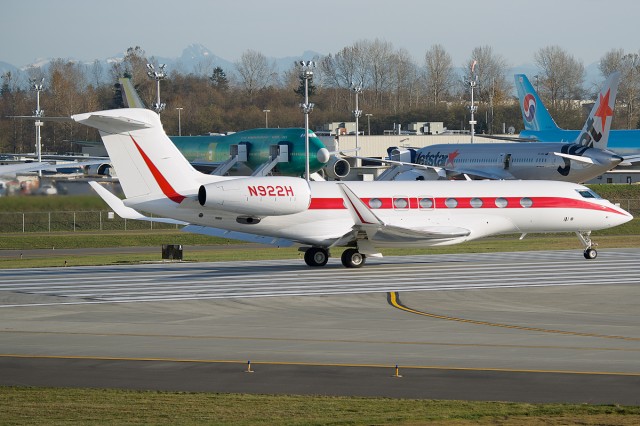
Honeywell’s mint-condition Gulfstream G650 departing KPAE – Photo: Bernie Leighton | AirlineReporter
Last year, I wrote about visiting Honeywell’s facility in Redmond, after which I got to spend an afternoon flying with their crash test dummies. That, however, only covers the activities of Honeywell Aerospace in Washington State.
Honeywell has a large presence in Phoenix, specifically at Deer Valley Airport. At one point this was the legacy of Sperry Electronics, which got its start making gyroscopes for Curtiss biplanes. They even had a rudimentary autopilot demonstration in June, 1914.
So, what does this have to do with Honeywell? Well, prior to their purchase by Honeywell Aerospace, Sperry developed the first Flight Management Computers (FMC). The best way to describe an FMC is that it’s a layer above the autopilot and allows for a degree of pre-planning and programming for the aircraft’s mission. Flight Management Computers have evolved to a level most of the old Sperry guard could never have imagined, though the form factor has remained relatively the same.
Honeywell Aerospace is not known for sitting still. Much of their avionics technology hangs out on the bleeding edge. The thing is, airlines and their associated airframers tend to demand low cost AND reliability. Flight deck and avionics design usually evolves within corporate aviation. It is no wonder, then, that Honeywell and Gulfstream work so closely to develop an integrated flight deck and avionics suite. The internal name of the Honeywell avionics and flight management package is Primus Epic.
While it is also at home on a Falcon 7X, Dassault puts their own special finishing touches on it so that it better matches their ecosystem. We’re not talking about Dassault today- we’re discussing Gulfstream- so the Honeywell system is marketed as PlaneView.
How does one get a good understanding of the practical elements of PlaneView/Primus Epic you ask?
The best way. By seeing it in person by flying on a Gulfstream G650 and who am I to say no?





